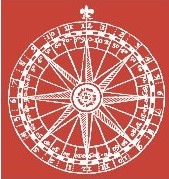Between Court and Village: The Evolution of Aristocratic Spaces in Early Modern Spain
In May 1561, King Philip II informed the town hall of Madrid that he had chosen their town as the site for his royal residence and court. That year, the city was swiftly transformed into the Catholic king’s court and the heart of his vast monarchy.…
Listed in Article | publication by group Iter Community
Version 1.0 - published on 18 Oct 2025
Licensed under Creative Commons BY-NC 4.0
Description
In May 1561, King Philip II informed the town hall of Madrid that he had chosen their town as the site for his royal residence and court. That year, the city was swiftly transformed into the Catholic king’s court and the heart of his vast monarchy. It also became the principal political and cultural space for the nobility. Yet the greatest noble houses, particularly those in Castile, were initially resistant to the establishment of a sedentary royal court and continued to exercise and represent their status at their own traditional courts. Increasingly, however, they were obliged to reside in Madrid in order to ensure direct access to the king’s grace and favour. Throughout the seventeenth century, the Spanish aristocracy became courtiers through necessity rather than conviction. In response to this situation, and without neglecting their noble estates and interests, they created their own spaces at court, and over time were able to colonize the royal capital and convert it into their own natural habitat.
Cite this work
Researchers should cite this work as follows:
Tags
Notes
Original publication: Hernández, Santiago Martínez. "Between Court and Village: The Evolution of Aristocratic Spaces in Early Modern Spain." Renaissance and Reformation 43 (4): 2021. 19-54. DOI: 10.33137/rr.v43i4.36379. This material has been re-published in an unmodified form on the Canadian HSS Commons with the permission of Iter Canada / Renaissance and Reformation. Copyright © the author(s). Their work is distributed by Renaissance and Reformation under a Creative Commons Attribution-NonCommercial 4.0 International License. For details, see https://creativecommons.org/licenses/.
Publication preview
Iter Community
This publication belongs to the Iter Community group.
When watching a publication, you will be notified when a new version is released.
